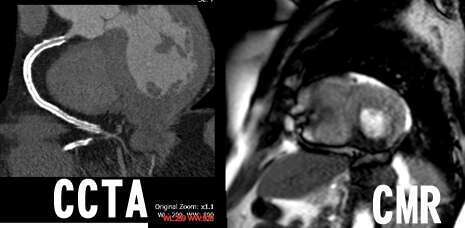
What Comes Next for Hard Calcification and Multiple Stents in Coronary Lesions?
2Internal Medicine, Cardiovascular, Respiratory and Neurology Division, Asahikawa Medical University
Coronary computed tomography angiography (CCTA) is one of the most powerful non-invasive diagnostic tool for the coronary artery lesions However, some difficulties for making diagnosis are recognized in particular conditions, such as very hard calcification and multiple stents implanted cases. In these conditions, the stress perfusion cardiovascular MR imaging is very useful. Here, we present extremely impressive two cases. Case 1 is late 60s male, he had undergone the percutaneous coronary intervention (PCI) with four bare metal stents in right coronary artery in 2006. After 8 years, he suffered acute inferior myocardial infarction and underwent PCI with three additional drug-eluting stents in his right coronary artery again. On 2015, he newly complained chest pain at scale 3/10 to 4/10 at low level activity. At arrival to our hospital, he had no chest pain and no ST segment changes on electrocardiogram. We tried to make a diagnosis by CCTA, but we could not estimate his right coronary artery due to stents’ artifact. Case 2 is 50s female, she referred to our hospital suspected of effort angina. Her 24 hours electrocardiogram revealed ST segment depression consistent with increasing in heart rate. We performed CCTA, but we could not estimate her coronary artery lesions because of extremely strong calcification on her coronary artery (Agaston score was 2800). The stress perfusion cardiovascular MR imaging enable to make diagnosis in these two cases. Here we present these two impressive cases with stress perfusion cardiovascular MR findings and discuss their significance in this meeting.

Powered by Eventact EMS